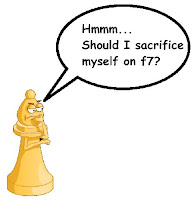While a student at Spring Hill College on the outskirts of Mobile Morphy traveled the twelve miles into the city a couple of times where during one of these visits, he played three games with Judge Alexander B. Meek, who was serving as judge of the probate court.
I read that one of the games was selected by Rashid Ziyatdinov for inclusion in GM-RAM: Essential Grandmaster Knowledge and is the source for three essential middlegame positions he listed, but I am not sure which game it was because I do not own the book.
Pachman defines equilibrium (what we would call "equality") as either 1) a drawn position where neither side has winning chances. He also observes that in these positions one side may still be able to find a way that sets his opponent with difficult problems to solve in order to maintain equality. And, 2) positions in which the prospects for both sides are equal. In these positions equality is maintained by different factors that determine the character of the position.
He then goes on to point out that equality cannot be advantageously upset by a sudden, unjustified attack and that doing so has the reverse effect for the player doing so. Examining the game shows that the line played by Meek been repeated many times by players below GM strength and while both Komodo 8 and Stockfish 7 evaluate the resulting positions as about equal, in actual practice black has won the vast majority of the games. I suspect that engines make this evaluation because they assign black's exposed King a larger negative value than is warranted. Remember, it's not a weakness if you cannot take advantage of it.
In the book Strategy and Tactics in Chess, Euwe classifies the type of sacrifice Meek executes here as a Break-up Sacrifice. Break-up sacrifices are those in which the King is deprived of protection by one or more sacrifice. Euwe also adds an important caveat: these sacrifices will be successful only if the attacking pieces greatly surpass the defending forces in number. For after the sacrifice enough pieces must still be left in order that mate or some other decisive result is obtained.
In this game if you look at the position after white's move 9 you will see that none of Euwe's criteria apply. Therefore Meek's sacrificial attack begun at move 6 simply must be wrong. It's also interesting to note that this must be the case even though the engines' evaluate the position as only slightly in black's favor whereas the Grandmasters' intuition tells them that white's position puts him at more than a slight disadvantage. Practically speaking, the position after his sacrifice may have been playable, but it was difficult to play...one slip and he's dead meat.
A site called Chessmaster Bob has a nice summary compiled from The Art of Attack in Chess by Vukovic that deals with categories of attacks, mistakes concerning mating patterns, etc. that is worth checking out.


No comments:
Post a Comment